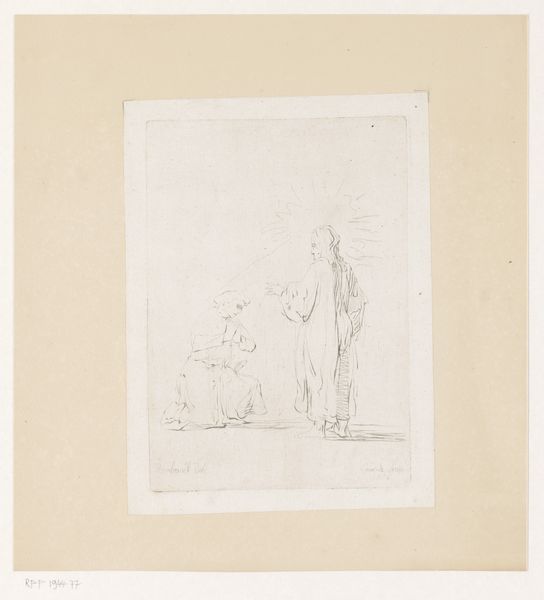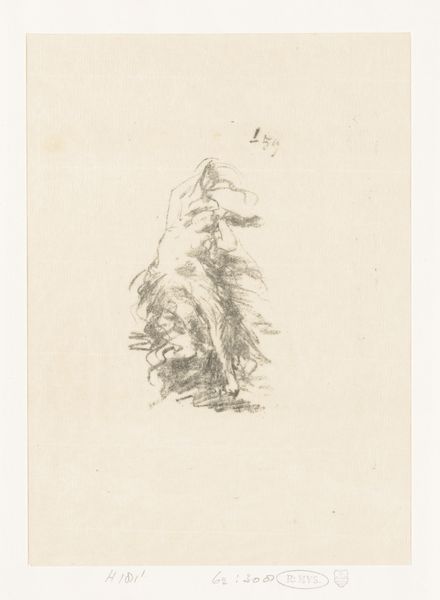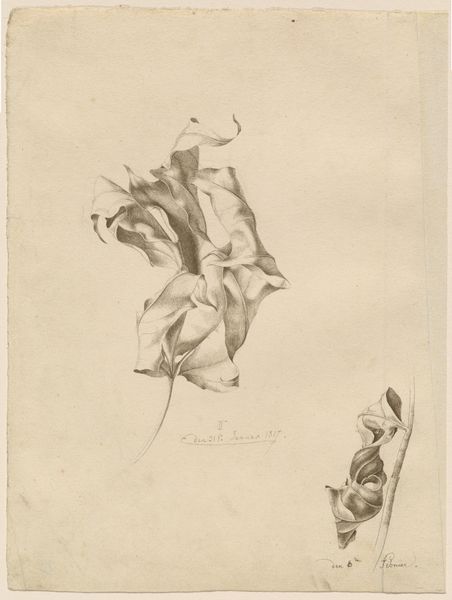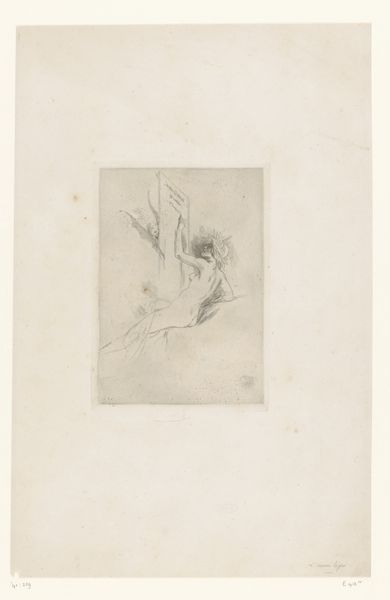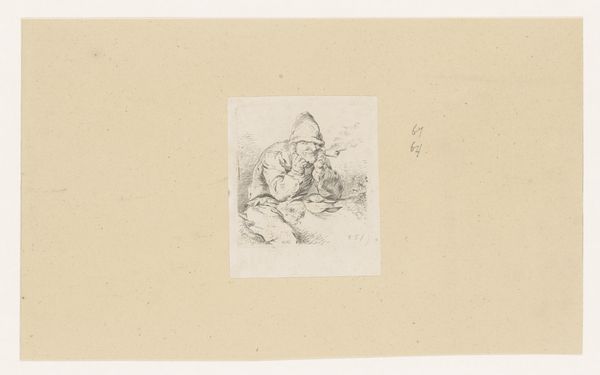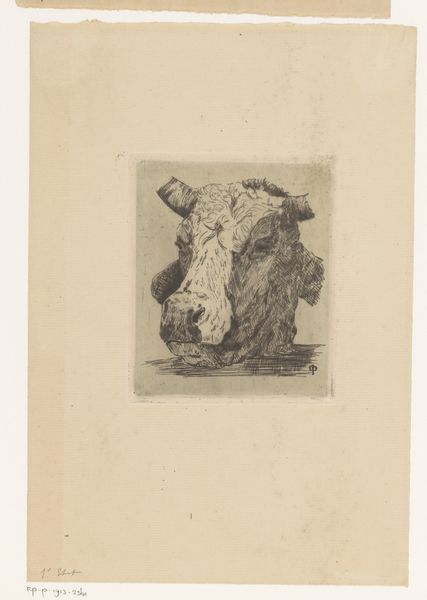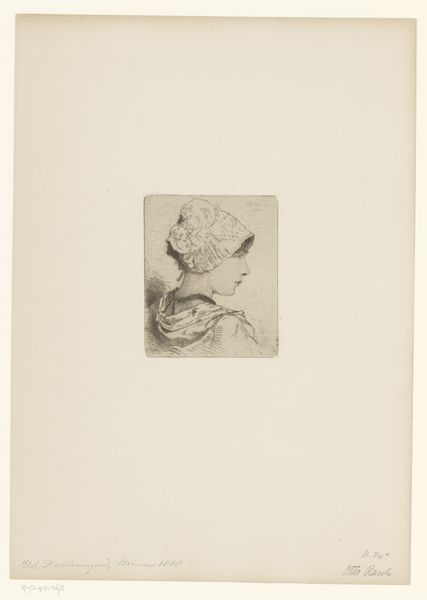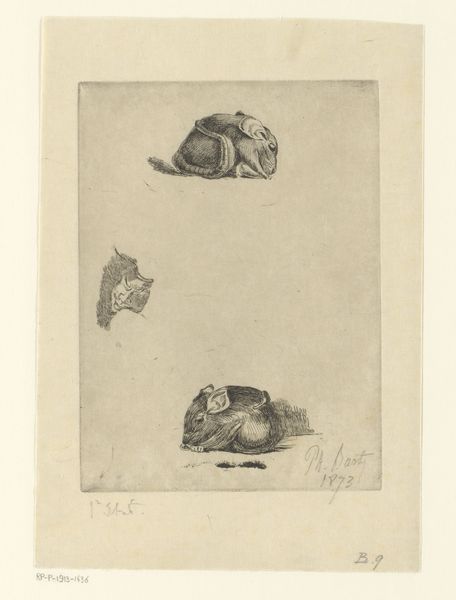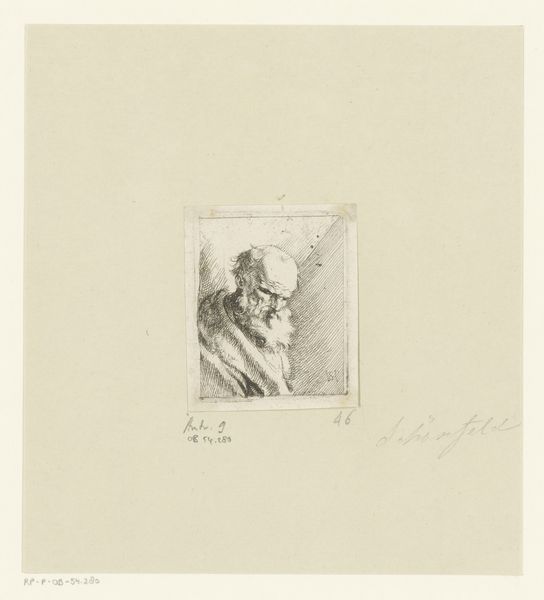
Aesculapius verdedigt een zieke man door de dood te verjagen 1792
0:00
0:00
danielnikolauschodowiecki
Rijksmuseum
drawing, print, etching, engraving
#
pencil drawn
#
drawing
#
light pencil work
#
allegory
#
narrative-art
# print
#
etching
#
pencil sketch
#
figuration
#
romanticism
#
line
#
pencil work
#
history-painting
#
engraving
Dimensions: height 85 mm, width 54 mm
Copyright: Rijks Museum: Open Domain
Curator: What strikes you first about this engraving, “Aesculapius defends a sick man by chasing away death,” by Daniel Nikolaus Chodowiecki from 1792? Editor: It's like a dream, isn't it? So fragile and raw. The image feels like a half-forgotten memory sketched in whispers, very light and delicate. What's your read on the mood? Curator: I see that lightness too, though it resonates more as hope than fragility. Chodowiecki engages classical iconography to portray a very Romantic struggle: life against death. Aesculapius, the Greek god of medicine, brandishes his staff against the skeletal figure of Death, attempting to intervene. Editor: Hope is a good way to put it – there's something about the dynamism that overrides the morbid subject matter. Death looks almost reluctant. Almost as if Aesculapius is simply requesting it politely to go away... though that might just be the gentleness of the lines fooling me. Curator: The composition, the struggle happening inside the tent suggests it might symbolize the body itself, with Death lurking near a group of people within it, while Aesculapius acts to prevent that event. The style Chodowiecki chose blends perfectly with the artwork’s narrative. It reminds us of an age where diseases spread quickly. It is easy to see why viewers sought hope. Editor: Absolutely. And it's interesting to me how he doesn't demonize Death; more like...a weary functionary. Gives it all a bittersweet quality. I like to think it suggests mortality might be as necessary and natural as it is difficult. I think Chodowiecki is making us think that the end it’s not something we should hate. Curator: A vital point about integrating acceptance of mortality in life is crucial here. Considering the artwork being created after several outbreaks, the artist might suggest a different approach toward death. Editor: Indeed! In just a small, delicate etching, there's an argument that acknowledges our very being and challenges the notion of pure opposition between life and death itself. It’s a very human outlook, indeed. Curator: A truly fascinating dialogue embedded within such simple lines. Editor: Certainly given me pause for thought. Thanks!
Comments
No comments
Be the first to comment and join the conversation on the ultimate creative platform.

